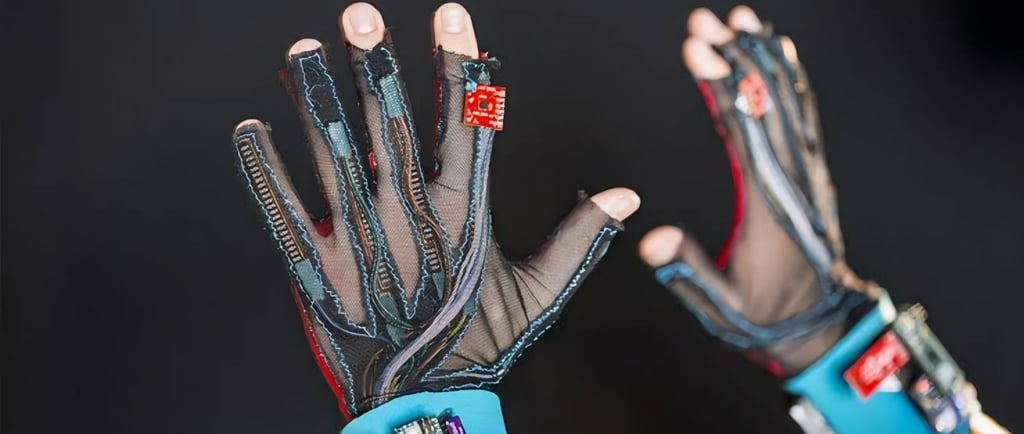Gloves That Turn Sign Language into Speech
How Two MIT Students Are Bridging the Silence Between the Deaf and the World
INNOVATION
Thrive Vision
5/29/20252 min read


In a small MIT lab in 2015, two engineering students Roy Allela and Navid Azodi were tinkering with a bold idea: What if deaf people could speak without saying a word? Driven by personal connections to the deaf community, they envisioned a device that would break the communication barrier between sign language users and the hearing world. After months of trial, error, and countless iterations, they built a prototype: a pair of gloves that could translate sign language into audible speech in real time.
The Problem They Saw
For millions of deaf and hard-of-hearing individuals worldwide, communicating with those who don’t understand sign language is a daily challenge. In public places, hospitals, schools, or even job interviews, many rely on interpreters or worse, face misunderstanding or exclusion.
Navid and Roy knew technology could change that.
The Invention: Real-Time Translation Gloves
Their innovation, called SignAloud, is a pair of lightweight gloves embedded with sensors that track hand positions and movements. These sensors wirelessly transmit data to a computer, which interprets the signs using machine learning algorithms and then speaks the translated words out loud through a speaker.
The entire process happens in real-time almost like a voice for sign language.
The gloves are also designed to be comfortable, affordable, and discreet something users can wear casually, without feeling like they're wearing bulky tech.
Recognition and Impact
SignAloud earned them the Lemelson-MIT Student Prize, a prestigious award given to promising inventors. More importantly, it sparked global conversations about the potential of assistive technology.
They were invited to present at innovation conferences, received grants for further development, and partnered with researchers to improve accuracy and expand support for multiple sign languages.
Beyond the Tech: A Human Mission
For Roy, the project was especially personal his young niece was born deaf, and he saw firsthand how isolating it could be. “This isn’t just about translating language,” he said, “It’s about giving people a voice, quite literally.”
Navid echoed the sentiment: “We don’t want to replace human interaction we want to enable it.”
Where It’s Heading
Since the initial prototype, the team has worked on refining the design, improving the machine learning model, and exploring mobile integrations. The vision is clear: a future where deaf and hearing people can communicate seamlessly no interpreters needed, no awkward pauses.
Glove, A Voice, A Breakthrough
SignAloud is more than an invention. It’s a reminder that empathy, when combined with engineering, can reshape lives. In the hands of a deaf person, these gloves are not just fabric and circuits they’re empowerment.
Inspiration
Explore success stories and motivational journeys today.
Growth
Vision
© 2025. All rights reserved.
